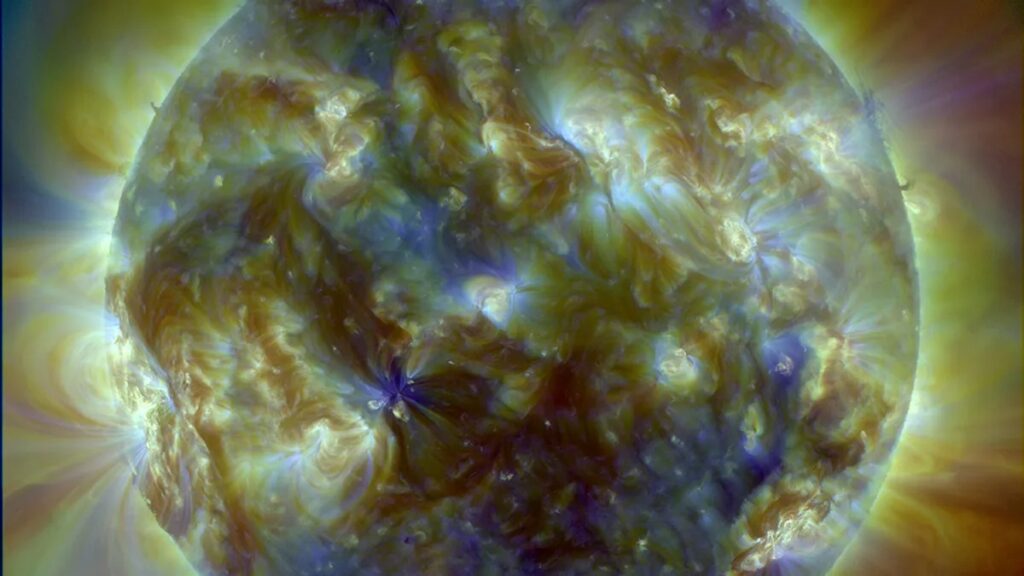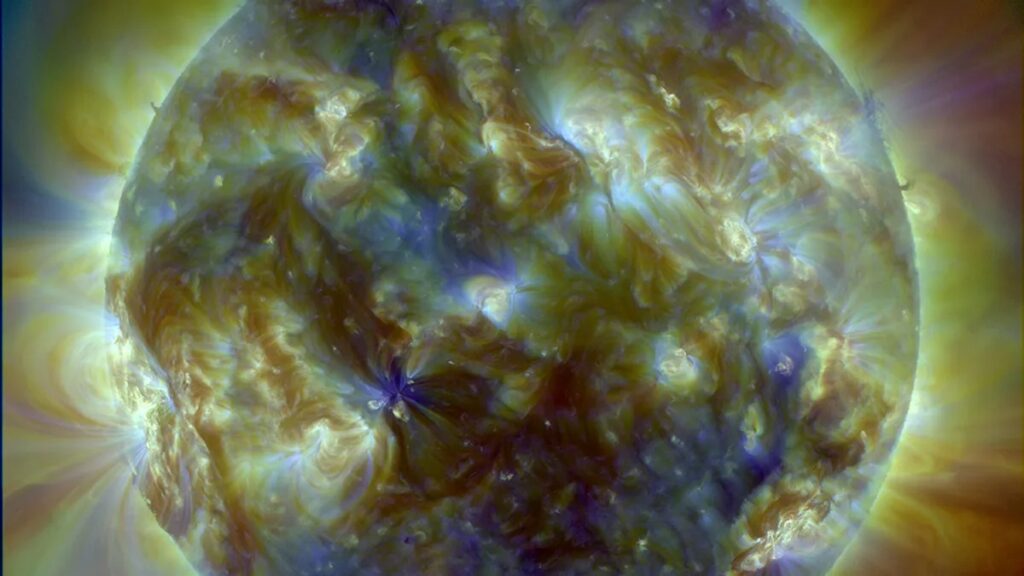
The Sun’s activity is currently on the rise, marked by a flurry of solar flares and radio blackouts here on Earth. But what’s causing this heightened activity, and what does it mean for us?
This surge in solar activity is part of a well-documented 11-year cycle known as the Schwabe cycle. Discovered by German astronomer Heinrich Schwabe in the early 19th century, this cycle sees the Sun transition from periods of relative calm to peak activity and back again. During this cycle, the Sun’s magnetic poles reverse, a phenomenon that influences various solar phenomena such as sunspots, flares, and coronal mass ejections.

Sunspots, in particular, play a significant role in understanding solar activity. These dark patches on the Sun’s surface are caused by fluctuations in its magnetic field. As the Sun’s equator rotates faster than its poles, it stirs up the magnetic field, leading to the formation of sunspots.
“The Sun’s magnetic fields rise through the convection zone and erupt through the photosphere into the chromosphere and corona,” explains NASA. “The eruptions lead to solar activity, which includes such phenomena as sunspots, flares, prominences, and coronal mass ejections.”
During the Schwabe cycle, the Sun’s magnetic field undergoes a complete reversal, akin to the Earth’s magnetic field, but on a much larger and more dynamic scale. This cycle typically lasts between 8 to 14 years, with periods of minimum solar activity followed by maximum activity.
Currently, we are witnessing an increase in solar activity, indicating that we are nearing the next solar maximum, which is predicted to occur sometime between January and October of this year.
However, recent research suggests a more precise method of predicting solar cycles by observing “terminator events.” These events occur when magnetic formations known as “magnetic donuts” converge and cancel each other out near the Sun’s equator. By studying the timing of these terminator events, researchers believe they can make more accurate predictions about the duration and intensity of solar cycles.
“If you measure how long a cycle is, not the minimum to minimum, but from terminator to terminator, you see that there is a strong linear relationship between how long one cycle is and how strong the next one is going to be,” explains NASA research scientist Robert Leamon.

Using this method, scientists predict that the Sun’s magnetic field will flip in mid-2024, just a few months before the onset of the solar maximum.
As we anticipate this significant event in the solar cycle, it serves as a reminder of the intricate dynamics of our closest star and the profound impact it has on our planet. Understanding these cycles not only helps us prepare for potential disruptions caused by solar activity but also deepens our knowledge of the fundamental processes driving our solar system.

Leave a Reply